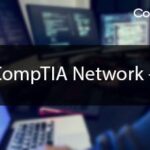Top 100 Ethical Hacking Interview Questions and Answers

Top 100 Ethical Hacking Interview Questions and Answers
1: What is ethical hacking?
The permitted and legal activity of evaluating the safety of computer systems, networks, applications, and architecture with the aim of uncovering vulnerabilities and flaws is referred to as ethical hacking, additionally referred to as penetration testing or white-hat hacking. Ethical hackers imitate actual cyberattacks using their knowledge and expertise to find potential weaknesses that malevolent hackers might exploit.
2: What are the different phases of ethical hacking?
The different phases of ethical hacking are mentioned below:
- Reconnaissance,
- Scanning,
- Enumeration,
- Vulnerability Assessment,
- Exploitation,
- Post-Exploitation,
- Reporting, etc.
3: Explain the concept of footprinting and reconnaissance.
The first stage of an assault or security assessment is called “footprinting,” which is another name for data collection. Developing a profile or “footprint” of a target system, network, or organization entails gathering data. The goal is to get a thorough grasp of the target’s online presence, technological setup, and any potential weaknesses.
On the other hand, the phase of reconnaissance, also known as network reconnaissance or network discovery, comes after the footprinting procedure. In order to learn more and evaluate the security posture of the target system or network, active probing, and scanning are used.
4: What is the difference between vulnerability scanning and penetration testing?
In general terms, while penetration testing takes a more active and human approach, replicating genuine assaults to find flaws and evaluate their impact, vulnerability scanning largely relies on the automated detection of identified flaws. Both tasks are important for making sure systems and networks are secure, and they are frequently combined to give a more comprehensive evaluation.
5: What is the difference between white box, black box, and gray box testing?
The mainstream difference among white box, black box, and grey box testing are as follows:
White Box Testing:
A testing strategy known as white box testing, often referred to as clear box testing or structural testing, involves looking at the internal structure, design, and execution specifics of the software being tested. The fundamental source code, architectural plans, and other internal documentation are available to testers.
Black Box Testing:
A technique known as “black box testing” involves testing software without having any knowledge of its core architecture or implementation specifics. Testers simulate how an end user would communicate with the system by simply being aware of the inputs, intended outputs, and performance of the software.
Gray Box Testing:
A hybrid strategy called gray box testing incorporates aspects of both white box and black box testing. The internal organization and implementation specifics of the product being tested are only partially known to testers.
6: What is the importance of a permission-based approach in ethical hacking?
In order to make certain that the operations are carried out legally, ethically, and with the explicit approval of the organization being targeted, a permission-based strategy is of the highest priority in ethical hacking. The following are the main arguments in favor of a permission-based strategy in ethical hacking:
- Legal Compliance,
- Ethical Conduct,
- Informed Consent,
- Accuracy and Effectiveness,
- Risk Mitigation,
- Trust and Collaboration, etc.
7: What is social engineering and what are some common techniques used?
Attackers may use social engineering to influence and fool others into disclosing private information, allowing illegal access, or taking security-compromising acts. It takes advantage of our predisposition to comply with demands from people who appear to be trustworthy and our psychology of trust. Moreover, below mentioned are a few typical social engineering methods:
- Phishing,
- Pretexting,
- Baiting,
- Tailgating,
- Impersonation,
- Reverse Social Engineering,
- Spear Phishing, etc.
8: What is the role of a threat intelligence analyst in ethical hacking?
Through information gathering, analysis, and interpretation concerning potential threats, vulnerabilities, and harmful behaviors, a threat intelligence analyst plays a significant part in ethical hacking. Their job is to offer intelligence and insights that can be used to promote ethical hacking.
9: Explain the concept of network scanning and enumeration.
Network infrastructure is routinely scanned in order to learn more about its hosts, services, devices, and vulnerabilities. The network is constantly probed to find live hosts, open ports, and accessible services.
Moreover, after early imaging, enumeration is the procedure of constantly compiling data on a target system, network, or application. Accessing particular details such as user accounts, shares, network connections, configurations, and application-specific data entails querying the specified hosts and services.
10: What are the common types of password attacks?
Some of the common types of password attacks are as follows:
- Brute Force Attack,
- Dictionary Attack,
- Hybrid Attack,
- Rainbow Table Attack,
- Credential Stuffing,
- Phishing,
- Keylogging,
- Shoulder Surfing, etc.
11: What is the difference between a vulnerability and an exploit?
A security hole or flaw that can be used by intruders to jeopardize the security of a system, network, piece of software, or application is referred to as a vulnerability. It stands for a possible point of entry or a weakness in the defenses of the system that an intruder could use to obtain access without authorization, disrupt operations, or engage in harmful activity.
On the other hand, an exploit is an element of code or an approach that uses a specific flaw to obtain access without authorization, alter or infiltrate a system, or carry out evil deeds. Attackers employ exploits as tools or approaches to take advantage of weaknesses and compromise the defenses of a target system.
12: Explain the concept of SQL injection and how it can be prevented.
A web application security flaw known as SQL injection happens when a cyber adversary is able to alter or insert malicious SQL code into a database query. It happens when input from users is not adequately cleaned or checked before being used in a SQL query, giving an intruder the ability to run unauthorized commands or extract private data from the database.
In addition, below mentioned are some of the mainstream techniques by which an SQL injection can be prevented:
- Input Validation,
- Parameterized Queries (Prepared Statements),
- Stored Procedures,
- Least Privilege Principle,
- Input Sanitization,
- Regular Security Updates,
- Security Testing, etc.
13: What is a firewall and how does it work?
The inner network and outside networks, including the internet, are separated by a firewall, a network security mechanism. By keeping track of and regulating network traffic that comes and goes according to established security regulations, it contributes to the internal network’s protection.
In addition, we have jotted down some of the mainstream mechanisms of a firewall:
- Traffic Filtering,
- Packet Inspection,
- Rule-based Decision Making,
- Network Address Translation (NAT),
- Stateful Inspection,
- Logging and Monitoring, etc.
14: How can you secure wireless networks from unauthorized access?
In order to stop unapproved individuals from using your network resources, acquiring confidential data, or launching assaults, it is essential to secure wireless networks from unauthorized access. Moreover, the following important actions will help wireless networks be more secure:
- Change Default Settings,
- Enable Encryption,
- Use Complex and Unique Wi-Fi Passwords,
- Enable Network Authentication,
- Disable SSID Broadcasting,
- MAC Address Filtering,
- Implement a Guest Network,
- Regularly Update Firmware,
- Disable Remote Management,
- Physical Security,
- Regularly Monitor Network Activity and many more.
15: What is the role of cryptography in ethical hacking?
Through the provision of a number of methods and tools for protecting data and interactions, cryptography plays a crucial part in ethical hacking. The following are some crucial functions of cryptography in ethical hacking:
- Confidentiality,
- Data Integrity,
- Authentication,
- Non-Repudiation,
- Password Storage,
- Secure Communication Channels,
- Vulnerability Analysis, etc.
16: What is the difference between symmetric and asymmetric encryption?
As a whole, symmetric encryption employs an individual shared secret key for both encryption and decryption, whereas asymmetric encryption makes utilizes a couple of keys — a public key and a private key — that are statistically related. Although symmetric encryption is quicker and more effective, secure key distribution is necessary. Asymmetric encryption, which solves the key distribution issue and adds greater security and authentication capabilities, requires more processing power. Both encryption techniques have advantages over one another, and they are frequently combined to strike a balance between security, effectiveness, and key management.
17: Explain the concept of session hijacking and how it can be prevented.
An assault known as session hijacking, often referred to as session stealing or session sidejacking, occurs when an intruder intercepts and seizes control of a client-server session that is already in progress. By doing this, the attacker can pretend to be the authorized user and get entry to their account or sensitive data without their permission. Web applications are frequently the target of session hijacking attacks, which take advantage of gaps in session management protocols.
To prevent session hijacking attacks, the following measures can be taken:
- Transport Layer Security (TLS),
- Secure Session Token Generation,
- Session Expiration and Invalidation,
- IP Address Validation,
- User Agent Validation,
- Two-Factor Authentication (2FA),
- Intrusion Detection and Monitoring,
- Regular Security Updates, etc.
18: What is the OWASP Top 10 and why is it important for ethical hackers?
The Open Web Application Security Project (OWASP) has issued a list of the top ten most significant online application security vulnerabilities, known as the OWASP Top 10. It is a helpful tool for comprehending and resolving typical issues that impact online applications. In order to assist ethical hackers in their attempts to safeguard web applications and systems, the OWASP Top 10 offers information on finding, mitigating, and blocking these vulnerabilities.
19: What is the role of a penetration tester in a security team?
A security team needs a penetration tester, commonly referred to as an ethical hacker or a security analyst. The systems, networks, and applications of an organization must be examined for vulnerabilities and their security posture evaluated. Moreover, the following are a penetration tester’s primary responsibilities and contributions to a security team:
- Identifying Security Weaknesses,
- Vulnerability Assessment,
- Penetration Testing,
- Reporting and Documentation,
- Collaboration with Security Teams,
- Stay Updated on Threats and Techniques,
- Security Awareness and Training,
- Compliance and Regulatory Requirements, etc.
20: How can you identify and mitigate cross-site scripting (XSS) vulnerabilities?
Untrusted user input that is not properly cleaned and shows up on a web page without the required encoding causes Cross-Site Scripting (XSS) vulnerabilities. This enables an attacker to insert harmful scripts that other users visiting the compromised page can execute. You can take the following actions to find and fix XSS flaws:
- Input Validation and Sanitization,
- Context-Specific Output Encoding,
- Content Security Policy (CSP),
- HTTP-only Cookies,
- Regular Security Patching,
- Security Testing,
- Secure Development Practices,
- Security Headers, etc.
21: Explain the concept of privilege escalation in ethical hacking.
Privilege escalation is a method employed by ethical hacking to obtain more access and privileges than were initially authorized within a system or network. It entails elevating privileges through the use of vulnerabilities or configuration errors, enabling the attacker to carry out operations and get access to resources that are typically forbidden.
22: What are the common techniques used for network intrusion detection?
A vital part of network security, network intrusion detection seeks to spot and warn of any security lapses or unwanted activity within a network. The following are some typical methods for network intrusion detection:
- Signature-based Detection,
- Anomaly-based Detection,
- Heuristic-based Detection,
- Traffic Analysis,
- Intrusion Detection System (IDS) and Intrusion Prevention System (IPS),
- Log Analysis,
- Network Behavior Analysis,
- Threat Intelligence Feeds, etc.
23: What is the importance of secure coding practices in preventing vulnerabilities?
Secure coding techniques are essential for avoiding flaws and enhancing the general security of software apps. The following are the main arguments in favor of secure coding practices:
- Vulnerability Prevention,
- Defense in Depth,
- Early Vulnerability Detection,
- Compliance with Security Standards and Regulations,
- Protection of Sensitive Data,
- Mitigation of Common Attack Vectors,
- Secure Configuration Management,
- Trust and Reputation,
- Cost-Effectiveness,
- Awareness and Education, etc.
24: How can you perform a successful phishing attack simulation?
A crucial step in evaluating the security knowledge and resistance of an organization’s personnel to phishing efforts is carrying out a successful phishing attack simulation. The following are the essential actions to do in order to successfully simulate a phishing attack:
- Define Objectives,
- Obtain Permission and Inform Stakeholders,
- Select Phishing Scenario,
- Craft Phishing Emails or Messages,
- Customize Target Groups,
- Test Phishing Infrastructure,
- Send Phishing Emails or Messages,
- Monitor and Analyze Responses
- Provide Immediate Feedback and Education,
- Evaluate Results and Plan Remediation,
- Conduct Regular Follow-Up, etc.
25: Explain the concept of a buffer overflow and how it can be exploited.
Whenever an app or procedure attempts to retain additional information in a buffer (temporary storage region in computer memory) than it can handle, a software vulnerability known as a buffer overflow results. Because of this, extra data may overflow into nearby memory areas, corrupt data, and possibly even cause the program to behave strangely or crash. Attackers may occasionally use buffer overflows as a means of breaking into a system or running malicious code.
In addition, below mentioned is a step-by-step breakdown of how to take advantage of a buffer overflow:
- Identifying a Vulnerable Program,
- Determining Input Size and Control,
- Crafting a Malicious Payload,
- Overwriting Return Address,
- Executing Malicious Code,
- Exploiting Privilege Escalation, etc.
26: What are the steps involved in conducting a wireless network penetration test?
The mainstream steps involved in conducting a wireless network penetration test are mentioned below:
- Planning and Reconnaissance,
- Wireless Network Scanning and Enumeration,
- Wireless Traffic Analysis,
- Vulnerability Assessment,
- Exploitation and Access,
- Post-Exploitation and Reporting, etc.
27: What is the difference between a vulnerability assessment and a penetration test?
In general terms, whereas vulnerability assessments concentrate on finding cybersecurity flaws and providing a thorough list of flaws, penetration testing goes a step higher by trying to take advantage of those security gaps in order to evaluate the security of the system and determine the potential effects. Both methods are crucial to maintaining the security of systems and networks, and they are frequently used in tandem as part of a thorough security evaluation.
28: Explain the concept of reverse engineering in ethical hacking.
Reverse engineering is the process of dissecting a system, piece of software, or product to discover its internal workings, guiding principles, and functioning. Reverse engineering is frequently employed in the setting of ethical hacking to investigate and comprehend the internal functions of the software, firmware, or hardware elements in order to detect flaws, unearth hidden features, or create countermeasures.
29: How can you protect sensitive information during transit and at rest?
To guarantee data security and integrity, sensitive information must be protected both in transit and at rest. To protect private data in these two states, try these popular techniques and technologies:
During Transit:
- To create secure communication channels, use encryption technologies like TLS, or SSL.
- Use VPNs to build safe connections between the network and distant users or places.
- When sending files over networks, use secure file transfer protocols like SFTP or HTTPS.
- Utilize PKI to guarantee data integrity and secure connectivity.
- Use 2FA to increase security while logging in or accessing sensitive information.
At Rest:
- When storing sensitive information in databases, file systems, or other storage devices, it should be encrypted.
- Limit who has access to important data while it is at rest by implementing stringent access controls.
- Use DLP tools to track and stop unwanted access and data loss.
- Keep private information in well-controlled and safe locations.
- Make sure you regularly back up your data and store it securely.
- When sensitive data is not necessary for a particular operation or testing surroundings, take into consideration data masking or anonymization procedures.
30: What are the best practices for securing web applications?
Some best practices to enhance the security of web applications are mentioned below:
- Input Validation and Sanitization,
- Use Parameterized Queries or Prepared Statements,
- Secure Authentication and Authorization,
- Protect Against Cross-Site Scripting (XSS)
- Prevent Cross-Site Request Forgery (CSRF),
- Security Patching and Updates,
- Secure Configuration,
- Implement Secure Coding Practices,
- Regular Security Testing and Code Reviews,
- Security Monitoring and Logging,
- User Training and Awareness, etc.
31: What is the role of a honey pot in an ethical hacking environment?
A honeypot is a useful tool for seeing and keeping track of unwanted actions and possible safety hazards in an ethical hacking scenario. A honeypot’s main function is to lure intruders in and redirect their focus away from valuable assets or vital systems.
32: Explain the concept of malware analysis and its importance in ethical hacking.
Malware analysis is the practice of analyzing harmful software, also referred to as malware, in order to comprehend its functioning, behavior, and potential effects on a system or network. It is a critical component of ethical hacking since it gives security experts knowledge of the internal functioning of malware so they can create efficient defenses to keep systems and networks safe.
33: What are the common types of denial-of-service (DoS) attacks?
Some common types of DoS attacks are as follows:
- TCP/IP Flood Attacks,
- Ping Flood Attacks,
- HTTP/S Flood Attacks,
- Slowloris Attacks,
- DNS Amplification Attacks,
- NTP Amplification Attacks,
- Smurf Attacks,
- Distributed Denial-of-Service (DDoS) Attacks, etc.
34: How can you identify and exploit security misconfigurations?
An essential component of ethical hacking and security testing is finding and exploiting security flaws. Systems, programs, or network components that are improperly configured or that contain default settings that might be abused by attackers constitute security misconfiguration. In addition, the following are the key steps to find and take advantage of security configuration errors:
- Reconnaissance,
- Vulnerability Scanning,
- Manual Inspection,
- Testing for Common Misconfigurations,
- Exploiting Misconfigurations,
- Proof of Concept and Reporting, etc.
35: What is the role of a security incident response team in ethical hacking?
In ethical hacking, a security incident response team’s (SIRT) job is to quickly identify, address, and minimize security incidents in a company’s systems or network. The SIRT is essential to a company’s broader safety posture and works collaboratively with ethical hackers to guarantee a prompt and efficient reaction to security issues.
36: Explain the concept of a man-in-the-middle attack and how it can be prevented.
A Man-in-the-Middle (MITM) attacks are a sort of cyberattack in which an intruder deceives two different individuals into thinking they are communicating directly with each other by intercepting and changing their messages. Without the knowledge or approval of the authorized parties that are involved, an intruder places oneself in the middle of the conversation and has the ability to intercept, change, or insert malicious content.
Moreover, it can be prevented with the following steps:
- Encryption,
- Public Key Infrastructure (PKI),
- Secure Wi-Fi and Network Practices,
- Two-Factor Authentication (2FA),
- Certificate Pinning,
- Security Awareness and Education, etc.
37: What are the steps involved in conducting a social engineering attack?
I can give you knowledge regarding social engineering. However, I must stress that unauthorized social engineering attacks are immoral and against the law. The actions that follow are just provided for informational purposes and to increase awareness of social engineering methods. Any security testing must always be done with the right consent and in accordance with ethical standards.
In addition, the steps typically involved in a social engineering attack are as follows:
- Research and Reconnaissance,
- Pretext Development,
- Initial Contact,
- Building Rapport,
- Exploitation,
- Maintaining Access,
- Covering Tracks, etc.
38: What is the importance of keeping software and systems up to date?
Updating software and systems is crucial for a number of reasons, including the following:
- Security Patching,
- Vulnerability Mitigation,
- Improved Stability and Performance,
- Compatibility with New Technologies,
- Compliance Requirements,
- Vendor Support,
- Avoiding Legacy Systems, etc.
39: How can you protect against insider threats in an organization?
A well-supporting organizational culture, technical safeguards, rules, and procedures are all necessary for insider threat protection within a workplace. Moreover, the following important steps can help reduce the danger of insider threats:
- Implement Strong Access Controls,
- Employee Screening and Background Checks,
- Security Awareness and Training,
- Monitor and Audit User Activities,
- Implement Data Loss Prevention (DLP) Solutions,
- Encourage Reporting and Whistleblowing,
- Segregation of Duties,
- Regular Security Assessments,
- Incident Response and Investigation,
- Continuous Monitoring and Review, and many more.
40: Explain the concept of web application security testing.
Auditing the safety of web applications to find holes and flaws that a cyber adversary might take advantage of is known as web application security testing. Web application security testing’s objective is to find cybersecurity holes and offer suggestions for fixing them, improving the application’s overall security posture.
41: What are the common techniques used for password cracking?
The highlighted common techniques used for password cracking are mentioned below:
- Brute Force Attack,
- Dictionary Attack,
- Hybrid Attack,
- Rainbow Table Attack,
- Phishing,
- Keylogging, and many more.
42: How can you detect and prevent network eavesdropping?
Some prominent measures to help detect and prevent network eavesdropping are as follows:
- Encryption,
- Virtual Private Network (VPN),
- Network Segmentation,
- Intrusion Detection and Prevention Systems (IDS/IPS),
- Network Monitoring and Packet Analysis,
- Wireless Network Security,
- Physical Security Measures,
- Regular Security Audits and Assessments,
- Employee Education and Awareness, etc.
43: What is the role of cryptography in securing data?
Below mentioned are the key roles of cryptography in securing data:
- Confidentiality,
- Data Integrity,
- Authentication and Non-Repudiation,
- Key Exchange,
- Secure Communication,
- Password Storage,
- Secure Data Storage, etc.
44: Explain the concept of privilege separation in ethical hacking.
By separating system rights into discrete and isolated levels, the safety principle known as “privilege separation” seeks to reduce the consequences of a security breach or unlawful entry. Privilege separation aids in preventing attackers from gaining unauthorized access to vital resources or committing destructive acts that can jeopardize the safety of a system or network when used in the field of ethical hacking.
Privileged and non-privileged actions are divided into different processes, accounts, or roles as part of privilege separation. By carrying out this, the potential harm an attacker may do is reduced even if they are able to penetrate a lower privilege level due to their limited access and capabilities.
45: What are the steps involved in conducting a physical security assessment?
The primary steps involved in conducting a physical security assessment are as follows:
- Define Objectives,
- Gather Information,
- Physical Observation,
- Access Control Evaluation,
- Surveillance Systems,
- Alarm Systems and Intrusion Detection,
- Physical Security Policies and Procedures,
- Personnel Security,
- Vulnerability Identification,
- Risk Assessment,
- Recommendations and Mitigation Strategies,
- Reporting, etc.
46: How can you secure a database from unauthorized access?
The integrity of the data held within a database must be maintained, and sensitive information must be protected by securing it from unwanted access. In order to secure a database, take the following actions:
- Implement Access Controls,
- Use Encryption,
- Regularly Update and Patch,
- Database Hardening,
- Use Strong Authentication,
- Regularly Monitor and Audit,
- Backup and Disaster Recovery,
- Secure Network Communication,
- Implement Database Activity Monitoring,
- Educate Users, etc.
47: What are the common techniques used for network traffic analysis?
Some common techniques used for network traffic analysis are as follows:
- Packet Capture,
- Traffic Flow Analysis,
- Protocol Analysis,
- Statistical Analysis,
- Intrusion Detection Systems (IDS),
- Deep Packet Inspection (DPI),
- Behavioral Analysis,
- Flow-Based Analysis,
- Pattern Matching,
- Visualization, etc.
48: Explain the concept of cross-site request forgery (CSRF) and how it can be prevented.
A type of online app risk known as cross-site request forgery (CSRF) arises when an attacker deceives a victim into carrying out unauthorized actions on a web application while the target is authorized. The exploit takes benefit of the confidence that exists between the victim’s browser and the web application.
Moreover, it can be prevented with the following strategies:
- Use CSRF Tokens,
- Same-Site Cookies,
- CSRF Protection in Frameworks,
- Referer Header Validation,
- User Interaction Confirmation,
- Strict Input Validation,
- Security Awareness Training, etc.
49: What is the role of a vulnerability management program in ethical hacking?
A company’s systems and infrastructure weaknesses should be found, evaluated, given priority, and mitigated as part of an ethical hacking program. It is a preventative measure to keep the assets of the company secure and lower the chance of exploitation by possible attackers. The main components of a vulnerability management program are as follows:
- Vulnerability Identification,
- Vulnerability Assessment,
- Risk Prioritization,
- Remediation Planning,
- Patch Management,
- Continuous Monitoring,
- Reporting and Communication,
- Collaboration and Coordination,
- Vulnerability Tracking and Metrics, and many more.
50: How can you identify and mitigate XML external entity (XXE) vulnerabilities?
The proactive methodologies to identify and mitigate XML external entity (XXE) vulnerabilities are as follows:
- Secure Input Validation,
- Disable External Entity Resolution,
- Use a Safe XML Parser,
- Use CDATA Sections,
- Implement Whitelisting,
- Limit XML Parser Permissions,
- Conduct Security Testing,
- Keep Software Up to Date,
- Security Awareness and Training, etc.
51: Explain the concept of covert channels in ethical hacking.
Covert channels are secret or illicit communication channels set up within a computer system or network. They are used in the field of ethical hacking. These channels are made to get around standard security measures and enable covert or stealthy information transmission. Attackers may use covert channels to leak private information or engage in unlawful activity on a compromised system.
52: What are the steps involved in conducting a wireless network security assessment?
In order to find flaws and shortcomings, a wireless network infrastructure’s safety position is evaluated as part of a wireless network security assessment. The evaluation attempts to guarantee wireless networks’ availability, secrecy, and integrity. The procedures for performing a wireless network security evaluation are as follows:
- Scope Definition,
- Reconnaissance,
- Wireless Network Scanning,
- Wireless Network Enumeration,
- Vulnerability Assessment,
- Authentication and Authorization Testing,
- Wireless Intrusion Detection,
- Social Engineering Testing,
- Reporting and Remediation,
- Post-Assessment Follow-up, etc.
53: How can you protect against social engineering attacks?
It takes a blend of technological supervision, security awareness, and guidelines from management to defend against social engineering assaults. The following are some essential precautions to take regarding social engineering attacks:
- Security Awareness and Training,
- Phishing Protection,
- Strong Password Policies,
- User Access Control,
- Secure Remote Access,
- Incident Response Plan,
- Physical Security Controls,
- Periodic Security Assessments,
- Incident Reporting and Communication,
- Ongoing Monitoring and Updates, etc.
54: What is the importance of secure coding practices in preventing vulnerabilities?
Secure coding techniques are essential for avoiding flaws and guaranteeing the general security of software apps. Here are some main arguments in favor of secure coding practices:
- Vulnerability Prevention,
- Defense in Depth,
- Risk Mitigation,
- Compliance with Security Standards,
- Cost Savings,
- Trust and Customer Confidence,
- Code Reusability and Maintainability,
- Education and Awareness,
- Secure Development Lifecycle (SDL),
- Industry Reputation, etc.
55: How can you detect and prevent network traffic analysis attacks?
Employing a variety of safety precautions along with tracking approaches to recognize and reduce potential dangers is essential to identifying and avoiding network traffic analysis assaults. In addition, the below-mentioned are some methods for spotting and avoiding network traffic analysis attacks:
- Encryption,
- Intrusion Detection and Prevention Systems (IDPS),
- Traffic Monitoring and Analysis,
- Network Segmentation,
- Intrusion Detection Systems (IDS),
- Access Control and Authentication,
- Traffic Encryption,
- Network Behavior Analysis,
- Security Information and Event Management (SIEM),
- Employee Training and Awareness,
- Regular Security Audits,
- Patch Management, etc.
56: What is the role of secure coding practices in preventing sensitive data exposure vulnerabilities?
By making sure software programs are designed and created with strong security safeguards in place, secure coding techniques play a critical role in eliminating vulnerabilities that could expose sensitive data. In order to avoid cybersecurity flaws that could expose sensitive data, secure coding methods play the following crucial roles:
- Input Validation,
- Authentication and Authorization,
- Encryption,
- Secure Storage,
- Error Handling and Logging,
- Session Management,
- Secure Configuration,
- Third-Party Libraries and Components,
- Regular Code Reviews and Testing,
- Security Training and Awareness, etc.
57: Explain the concept of secure software development lifecycle (SDLC) in ethical hacking.
A secure software development lifecycle (SDLC) is an idea that emphasizes the integration of security controls at each stage of the software development process. It includes a collection of best practices, regulations, and procedures designed to find, address, and prevent security flaws across the software development cycle. The objective is to create secure, resilient software that can fend off threats and safeguard confidential data.
58: What are the steps involved in conducting a physical penetration test?
The main steps involved in conducting a physical penetration test are jotted down:
- Planning and Scope Definition,
- Reconnaissance,
- Threat Modeling,
- Social Engineering,
- Physical Access Testing,
- Internal Reconnaissance,
- Exploitation and Persistence,
- Documentation and Reporting,
- Debriefing and Recommendations, etc.
59: How can you detect and prevent network spoofing?
Maintaining a network’s integrity and security depends on identifying and blocking network spoofing. In addition, network spoofing is the act of an attacker pretending to be a trusted device or network object in order to track and control network traffic. The following techniques can be used to spot and stop network spoofing:
- Implement Network Segmentation,
- Use Network Intrusion Detection Systems (NIDS),
- Deploy Network Monitoring and Traffic Analysis Tools,
- Enable Port Security,
- Implement Strong Authentication Mechanisms,
- Deploy Secure Network Protocols,
- Enable IP Spoofing Prevention Measures,
- Educate and Train Network Users,
- Regularly Update and Patch Network Devices,
- Perform Regular Network Audits, etc.
60: Explain the concept of data exfiltration and how it can be prevented.
Data exfiltration is the term for a cyber intruder’s unlawful transmission or removal of sensitive or private information from a network or system. It comprises stealing data from a company’s internal network, which is subsequently transmitted to an outside site under the adversary’s authority. Information about clients, intellectual property, financial information, and any additional valuable information that can be sold or used maliciously can be included in this data.
Moreover, data exfiltration can be prevented with the help of the following tactics:
- Network Segmentation,
- Intrusion Detection/Prevention Systems (IDS/IPS),
- Data Loss Prevention (DLP) Solutions,
- Access Controls and Authentication,
- Encryption,
- Employee Education and Awareness,
- Incident Response and Monitoring,
- Regular Vulnerability Assessments and Patch Management, etc.
61: What are the common techniques used for web application fingerprinting?
Some of the key common techniques used for web application fingerprinting are mentioned below:
- Banner Grabbing,
- HTTP Headers Analysis,
- Page Source Code Analysis,
- URL Structure Analysis,
- Error Message Analysis,
- Framework-Specific Artifacts,
- Web Server Fingerprints,
- Directory and File Enumeration,
- JavaScript Analysis,
- Web Application Scanners, etc.
62: How can you secure a network against unauthorized access?
Implementing several security measures to safeguard the network infrastructure, devices, and data from unknown users is necessary to secure a network against unauthorized access. These crucial actions can aid in network security:
- Implement strong network perimeter defenses,
- Secure network devices,
- Secure wireless networks,
- Use strong authentication and access controls,
- Encrypt network traffic,
- Regularly update and patch systems,
- Implement network segmentation,
- Implement network monitoring and logging,
- Conduct regular security assessments and penetration testing,
- Educate and train network users, etc.
63: What is the role of a red team in ethical hacking?
A red team’s role in ethical hacking is to imitate actual attacks and make an effort to get past a company’s security measures. To find flaws and vulnerabilities in a company’s structures, procedures, and defenses, a group of knowledgeable professionals — known as red teamers — take on the role of an enemy.
64: Explain the concept of browser security and its importance in ethical hacking.
The term “browser security” describes the precautions undertaken in order to protect against numerous security risks and weaknesses in online browsers. In order to guarantee the safety, integrity, and accessibility of user information as well as prevent illicit entry or malicious activities, it requires putting security features, best practices, and safeguards into place.
In addition to this, web browsers serve as the main point of contact for users and online services, making browser security crucial for ethical hacking. Attackers commonly target them in order to take advantage of flaws and obtain unauthorized access to private data. In this situation, ethical hackers concentrate on finding and fixing browser-related security flaws to improve system security as a whole.
65: What are the steps involved in conducting a wireless network encryption assessment?
The primary steps involved in conducting a wireless network encryption assessment are jotted down:
- Scoping,
- Wireless Network Enumeration,
- Encryption Protocol Analysis,
- Encryption Strength Assessment,
- Vulnerability Identification,
- Authentication Mechanism Evaluation,
- Exploitation and Penetration Testing,
- Reporting and Recommendations,
- Remediation and Follow-Up, and many more.
66: How can you protect against SQL injection attacks?
To protect against SQL injection attacks, you can implement several preventive measures:
- Input Validation and Parameterized Queries,
- Least Privilege Principle,
- Principle of Defense in Depth,
- Regular Patching and Updates,
- Error Handling and Logging,
- Database Security Configuration,
- Security Awareness and Training,
- Regular Security Audits and Penetration Testing, etc.
67: What is the importance of secure configuration management in ethical hacking?
Secure configuration management is essential to ethical hacking since it significantly reduces a system’s attack surface and assists in avoiding security flaws. Here are some reasons secure configuration management is crucial:
- Vulnerability Mitigation,
- Attack Surface Reduction,
- Compliance with Best Practices and Standards,
- Defense against Common Attack Techniques,
- Detection of Anomalies and Intrusions,
- Rapid Incident Response,
- Consistency and Standardization,
- Secure Development Practices, etc.
68: What are the common techniques used for malware detection and analysis?
Some of the common techniques used for malware detection and analysis are mentioned below:
- Signature-Based Detection,
- Heuristic Analysis,
- Behavior-Based Analysis,
- Sandboxing,
- Static Analysis,
- Dynamic Analysis,
- Memory Analysis,
- Reverse Engineering,
- Threat Intelligence, etc.
69: Explain the concept of covert channels in ethical hacking.
Covert channels are constructed within a system or network and are referred to as secret or illegal communication channels in the area of ethical hacking. These channels are utilized to get over customary security measures and permit unlawful data transmission or inter-entity connection. The term “covert” means that the exchange of information is meant to be concealed or hidden, making it harder for conventional safety protocols to detect or trace.
In this regard, cyber intruders may use covert channels to leak confidential data, get around access restrictions, or engage in illicit activity on a system that has been compromised. These channels use a variety of strategies to mask illegal communication, including steganography (which conceals data in seemingly harmless files or media), timing or bandwidth manipulation, data encoding within legal protocols, and manipulation of timing or bandwidth.
70: What are the steps involved in conducting a cloud security assessment?
An evaluation of the security architecture of cloud environments is necessary to pinpoint vulnerabilities, incorrect setups, and potential dangers while performing a cloud security assessment. The steps that normally go into completing a cloud security assessment are as follows:
- Define the Scope,
- Identify Cloud Security Best Practices,
- Gather Information,
- Assess Identity and Access Management (IAM),
- Review Data Encryption,
- Evaluate Network Security,
- Assess Data Loss Prevention (DLP),
- Review Incident Response and Monitoring,
- Check Compliance and Regulatory Requirements,
- Penetration Testing,
- Document Findings and Recommendations,
- Remediation and Follow-Up, etc.
71: How can you detect and prevent phishing attacks?
In order to defend against illegal entry into sensitive data and social engineering threats, it is essential to recognize and stop phishing assaults. Following are some steps to recognize and stop phishing attacks:
- User Education and Awareness,
- Email Filtering and Anti-Spam Measures,
- Multi-Factor Authentication (MFA),
- Website URL Verification,
- Phishing Simulation and Testing,
- Suspicious Link Analysis,
- Email Header Analysis,
- Incident Reporting and Response,
- Regular Software Updates,
- Anti-Phishing Tools and Technologies,
- Web Filtering and URL Blacklisting,
- Security Awareness Programs, etc.
72: What is the role of secure coding practices in preventing buffer overflow vulnerabilities?
A prominent form of software vulnerability that can be abused by intruders is the buffer overflow vulnerability, and secure coding techniques are essential in preventing it. Utilizing secure coding techniques, buffer overflow risks can be reduced as follows:
- Input Validation,
- Bounds Checking,
- Use Safe String Functions,
- Memory Management,
- Stack Protection Mechanisms,
- Code Reviews and Testing,
- Compiler Security Flags,
- Avoid Unsafe Functions,
- Secure Coding Guidelines,
- Stay Updated, etc.
73: Explain the concept of threat modeling in ethical hacking.
A proactive method of spotting and evaluating possible risks and weaknesses in a system or application is threat modeling. To comprehend and order the dangers that the system faces, it is necessary to methodically analyze the system’s architecture, performance, and possible vectors of attack. Threat modeling is a crucial step in ethical hacking to find and fix security flaws before bad actors may take advantage of them.
74: What are the steps involved in conducting a web application security assessment?
Below mentioned is a thorough list of the mainstream steps involved in conducting a web application security assessment:
- Scope Definition,
- Information Gathering,
- Threat Modeling,
- Vulnerability Scanning,
- Manual Testing,
- Authentication and AuthorizationInput Validation and Output Encoding,
- Security Misconfigurations,
- Session Management,
- Error Handling and Logging,
- Report Generation,
- Remediation and Follow-up, etc.
75: How can you protect against network reconnaissance and scanning?
With the decent usage of the following tactics, you can genuinely protect against network reconnaissance and scanning:
- Network Segmentation,
- Firewall Configuration,
- Intrusion Detection and Prevention Systems (IDS/IPS),
- Network Monitoring,
- Disable Unnecessary Services and Ports,
- Regular Vulnerability Assessments,
- Patch Management,
- Network Access Control,
- Employee Education and Awareness,
- Incident Response Plan, and many more.
76: What is the importance of secure coding practices in preventing cross-site scripting (XSS) vulnerabilities?
Cross-site scripting (XSS) weaknesses, one of the most prevalent online application security problems, can be prevented in large part by using secure coding techniques. When an intruder inserts malicious scripts into a web application, the browsers of unwary users subsequently execute the scripts, leading to vulnerabilities known as XSS. These assaults may have a number of effects, including the theft of private data, hijacking of sessions, defacing of websites, and the dissemination of malware.
77: What are the common techniques used for network packet sniffing?
The most common techniques used for network packet sniffing:
- Promiscuous Mode,
- ARP Spoofing,
- Hubs and Network Taps,
- Port Mirroring,
- Wireless Packet Sniffing,
- Rogue Access Points, etc.
78: Explain the concept of vulnerability prioritization and risk assessment in ethical hacking.
Vulnerability Prioritization:
Prioritizing vulnerabilities entails assessing and prioritizing them according to their likely impact and possibility for exploitation. When deciding which weaknesses to address first, companies can use this technique to take time and resource restrictions into account.
Risk Assessment:
A company’s assets, operations, and reputation must be evaluated along with any potential hazards that may exist. This process is known as risk assessment. It takes into account the whole risk environment in addition to specific vulnerabilities.
79: What are the steps involved in conducting a social engineering awareness campaign?
The mainstream steps involved in conducting a social engineering awareness campaign are as follows:
- Assess the Current State,
- Define Objectives,
- Develop Educational Materials,
- Training and Workshops,
- Simulated Phishing Campaigns,
- Create Policies and ProceduresRegular Communication,
- Reporting Mechanisms,
- Continuous Monitoring and Evaluation,
- Reinforcement and Ongoing Education, etc.
80: How can you detect and prevent insider threats?
Some key steps to detect and prevent insider threats are mentioned below:
- Implement Access Controls,
- User Monitoring
- Data Loss Prevention (DLP) Solutions,
- Network Segmentation,
- Employee Training and Awareness,
- Incident Response Plan,
- Behavioral Analytics,
- Regular Audits and Reviews,
- Reporting Channels,
- Employee Engagement and Support, etc.
81: What is the role of secure coding practices in preventing privilege escalation vulnerabilities?
Privilege escalation issues can be prevented to a large extent by using secure coding techniques. When a user or an intruder elevates their rights without authorization, they are able to access areas that weren’t intended to be accessible at all. This is known as privilege escalation. Developers can lessen the possibility of privilege escalation flaws in their products by adhering to secure coding principles.
82: Explain the concept of network segregation and its importance in ethical hacking.
The process of splitting a computer network into distinct subnetworks or segments to improve security and manage network traffic is commonly referred to as network segregation, sometimes called network segmentation or network isolation. According to established regulations and security needs, interaction among each segment or subnet is prohibited and managed. Each segment or subnet runs separately. Network segmentation is essential for ethical hacking since it offers the following advantages:
- Enhanced Security,
- Access Control
- Compliance and Regulatory Requirements,
- Network Performance and Scalability,
- Simplified Network Management,
- Containment of Malicious Activity, etc.
83: What are the steps involved in conducting a mobile application security assessment?
The main steps generally included in conducting a mobile application security assessment are as follows:
- Planning and Scoping,
- Information Gathering,
- Threat Modeling,
- Static Analysis,
- Dynamic Analysis,
- API and Server Testing,
- Data Storage Analysis,
- Report Generation and Remediation,
- Retesting and Validation, etc.
84: How can you protect against distributed denial-of-service (DDoS) attacks?
The proficient steps that we can use to protect against DDoS Attacks are as follows:
- Implement DDoS Mitigation Solutions,
- Network Traffic Monitoring,
- Increase Network Bandwidth and Scalability,
- Configure Firewalls and Routers,
- Use Content Delivery Networks (CDNs),
- Enable Anomaly Detection and Intrusion Prevention Systems,
- Configure Rate Limiting and Traffic Shaping,
- DDoS Testing and Preparedness,
- Collaborate with ISPs and DDoS Mitigation Providers,
- Implement CAPTCHA or Token-Based Verification, etc.
85: What is the importance of secure coding practices in preventing SQL injection vulnerabilities?
One of the most prevalent and deadly security issues in web applications, SQL injection vulnerabilities, can be significantly reduced by using secure coding standards. Here are some reasons why secure coding is crucial for avoiding SQL injection:
- Input Validation,
- Defense against Malicious Input,
- Escaping Special Characters,
- Principle of Least Privilege,
- Regular Code Reviews and Testing,
- Developer Awareness and Training,
- Defense-in-Depth Approach, etc.
86: What are the common techniques used for system fingerprinting and enumeration?
Some common techniques used for system fingerprinting and enumeration are as follows:
- Port Scanning,
- Banner Grabbing,
- Service Identification,
- OS Fingerprinting,
- DNS Enumeration,
- SNMP Enumeration,
- Directory Enumeration,
- Active Scanning, etc.
87: Explain the concept of security information and event management (SIEM) in ethical hacking.
A technique or concept used in ethical hacking called Security Information and Event Management (SIEM) entails gathering, analyzing, and correlating security event logs and data from numerous sources within a company’s network infrastructure. SIEM systems are made to offer features for real-time threat detection, incident response, and monitoring.
88: What are the steps involved in conducting a wireless network rogue access point assessment?
The mainstream steps involved in conducting a wireless network rogue access point assessment are jotted down:
- Planning and Preparation,
- Scanning and Discovery,
- Access Point Analysis,
- Investigation and Validation,
- Reporting and Remediation,
- Follow-up, etc.
89: How can you detect and prevent cross-site request forgery (CSRF) attacks?
We can sincerely detect and prevent cross-site request forgery (CSRF) attacks with the following best practices:
- Use CSRF Tokens,
- Same-Site Cookies,
- CSRF Protection Frameworks,
- Verify Referer Header,
- Double Submit Cookies,
- Implement Same-Origin Policy,
- User Education and Awareness,
- Content Security Policy (CSP),
- Regular Security Audits, etc.
90: What is the role of secure coding practices in preventing XML external entity (XXE) vulnerabilities?
XML External Entity (XXE) vulnerabilities can be prevented in large part by using secure coding techniques. Whenever an XML parser analyzes external entities, XXE flaws can develop, which can result in a variety of attacks, including server-side request forgery (SSRF), denial of service (DoS), or the leaking of sensitive information.
91: Explain the concept of virtualization security and its importance in ethical hacking.
The term “virtualization security” encompasses the policies and procedures used to guard against security threats and illegal entry into virtualized systems, such as virtual machines (VMs), hypervisors, and virtual networks. Since the technology for virtualization is frequently employed in both development and production situations, and since protecting virtualized systems is critical for preserving the safety, integrity, and accessibility of data and resources, it is crucial to ethical hacking.
92: What are the steps involved in conducting a network vulnerability assessment?
The all-around phases included in conducting a network vulnerability assessment are as follows:
- Scope Definition,
- Reconnaissance,
- Vulnerability Scanning,
- Vulnerability Assessment,
- Vulnerability Prioritization,
- Risk Assessment,
- Reporting,
- Remediation,
- Continuous Monitoring, etc.
93: How can you protect against insider threats?
Technical controls, regulations, and an emphasis on organizational culture must all be used to protect against insider risks. The following are some tactics for avoiding insider threats:
- Employee Awareness and Training,
- Access Control and Privilege Management,
- Strong Authentication and Password Policies,
- Data Loss Prevention (DLP) Solutions,
- Monitoring and Logging,
- Separation of Duties,
- Incident Response and Reporting,
- Regular Security Assessments,
- Employee Exit Processes,
- Continuous Monitoring and Improvement, etc.
94: How important is secure coding practices in preventing remote code execution vulnerabilities?
In order to stop remote code execution vulnerabilities, secure coding techniques are essential. RCE vulnerabilities are when an intruder may potentially execute arbitrary programs on a target system, frequently resulting in a total compromise of the system. Developers can drastically lower the possibility of adding these vulnerabilities to their products by adhering to secure coding principles.
95: What are the common techniques used for wireless network deauthentication and disassociation attacks?
Attacks on wireless networks that interrupt or detach gadgets from the network include deauthentication and disassociation attacks. The Wi-Fi protocol’s flaws are used in these attacks to cause legitimate devices to disconnect from the network. Below mentioned are a few typical methods for deauthentication and disassociation attacks on wireless networks:
- Deauthentication Frames,
- Disassociation Frames,
- Beacon Flooding,
- Jamming Techniques,
- Rogue Access Points, etc.
96: Explain the concept of incident response and its importance in ethical hacking.
A methodical technique for dealing with and managing security problems in an organization is called incident response. In order to reduce damage, control the issue, and resume normal operations, it entails quickly identifying, assessing, and reacting to security incidents. Incident response is essential in the setting of ethical hacking for spotting and containing security flaws and unauthorized activity.
97: What are the steps involved in conducting a physical access control assessment?
The specialized steps involved in conducting a physical access control assessment are as follows:
- Define Objectives,
- Gather Information,
- Identify Potential Vulnerabilities,
- Physical Assessment,
- Test Access Controls,
- Evaluate Policies and Procedures,
- Document Findings,
- Report and Present Findings,
- Implement Recommendations,
- Ongoing Monitoring and Review, etc.
98: Is hacker is a good profession?
99: What a hacker knows?
A hacker, particularly an ethical hacker or a cybersecurity professional, possesses a broad range of knowledge and skills related to computer systems and security. Here are some areas that a hacker typically knows:
- Computer Networks: Hackers have a deep understanding of computer networks, including protocols, routing, firewalls, and network architecture. They know how data flows across networks and can identify potential vulnerabilities.
- Operating Systems: Hackers are knowledgeable about various operating systems like Windows, Linux, macOS, and their inner workings. They understand the file systems, user management, permissions, and security features of these systems.
100: Is it easy to learn Python?
Yes, Python is generally considered to be one of the easiest programming languages to learn, especially for beginners. There are several reasons why Python is considered beginner-friendly:
- Simple and Readable Syntax: Python has a clean and easy-to-understand syntax, which resembles the English language. It uses indentation and whitespace to structure code, making it more readable and intuitive compared to other programming languages.
- Vast Community Support: Python has a large and active community of developers who are willing to help and share their knowledge. There are numerous online resources, tutorials, and forums available where you can find guidance and support while learning Python.
- Rich Standard Library: Python comes with a comprehensive standard library that provides ready-to-use modules for various tasks, such as file handling, networking, and data manipulation. This eliminates the need to write code from scratch for common functionalities, making it easier to accomplish tasks quickly.
















